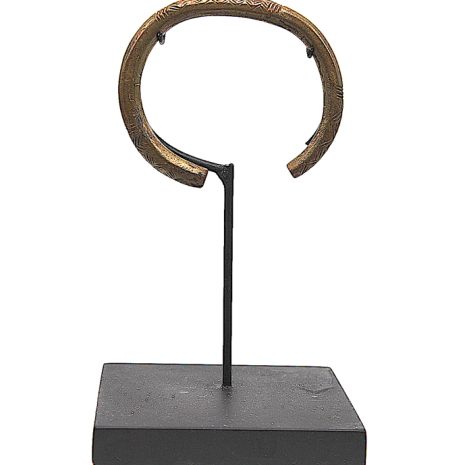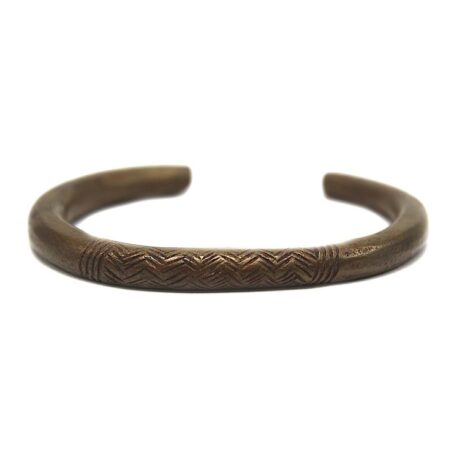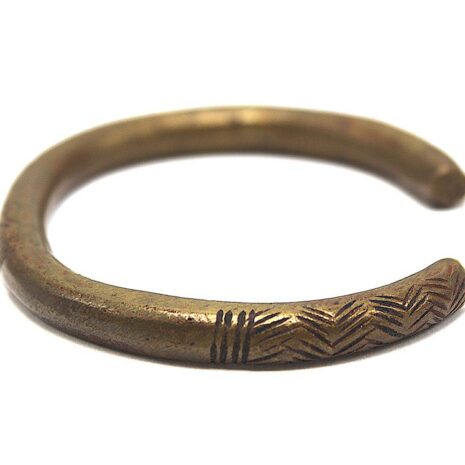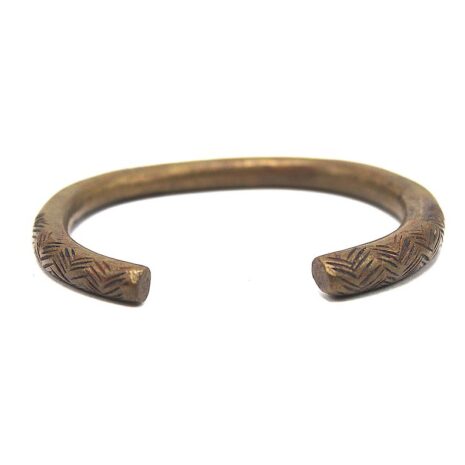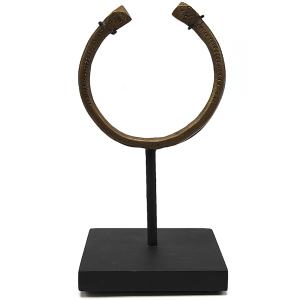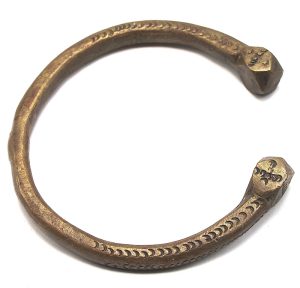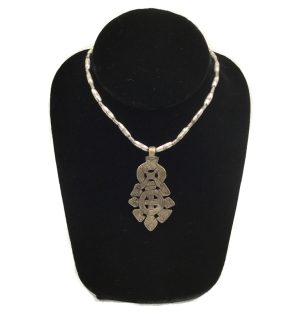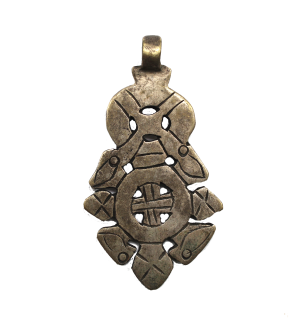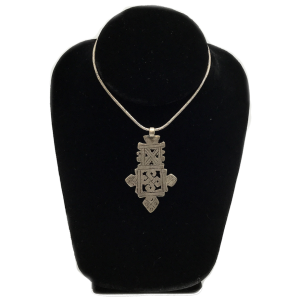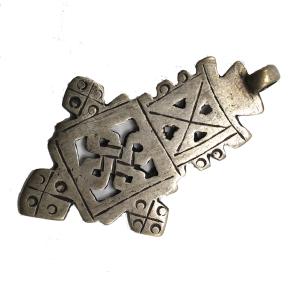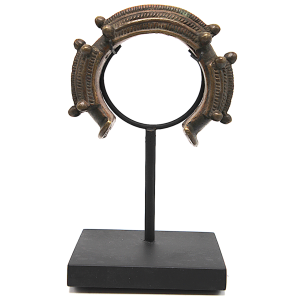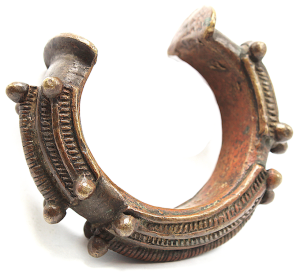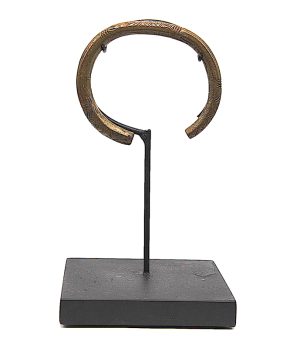SOLD Antique Yoruba Manilla Currency/Slave Bracelet, West Africa
$110.00
SOLD
Manillas were commonly used by the Yoruba in the Coastal regions of Nigeria and along the Niger River. This thin simple round C-shaped manilla is decorated with incised linear designs on the outer round surface: it is centered on the top with parallel zig zag lines between a set of four parallel indentations which frame it. Each end also has zig zag indented striations. Simple, yet elegant, the bracelet is in very good condition, with normal wear, and pitting that verify its age and use. It comes with a wood metal stand.
Description
Numbering over 20 million people, the Yoruba are one of the three largest ethnic groups in Nigeria and are also scattered in Benin and Togo. They are among the most skilled and productive craftsmen in Africa. Historically, copper bracelets were produced, worn, and used as currency in the Coastal regions of Nigeria, used for marketing, as dowries, for paying fines, for ritual purposes such as burials, and as a display and storage of personal wealth. In Nigeria, Manillas were often hung over a grave to show the wealth of the deceased. Portuguese traders who arrived in Africa in the 15th century recognized the significance of these bracelets and soon they are other European traders had them fabricated by metal smiths in Europe and called them manillas. They became the primary currency in parts of West Africa for all transactions including the slave trade. Several varieties and shapes of manillas were created that reflected local practices, and they were named and valued differently in regions scattered throughout Africa. Once a beautiful indigenous form of currency and adornment for and by African peoples, manillas became the currency for the slave trade to the Americas and were referred to as “slave bracelets,” “slave trade money” and “bracelet money” to purchase slaves to work on plantations in the Americas. Slave bracelets were finally prohibited for use by foreign traders under the Manilla Currency Ordinance of 1919 but continued to be used by the West African Currency Board for several decades. During the 1940s and 50’s they were collected and meltdown to use for other purposes.
Click here for Blog Manillas: Former African Trade Currency.
Additional information
| Place of Origin | Africa |
|---|---|
| Period | Antique (1200-1920) |
| Materials and Technique | Bronze/brass/copper alloy |
| Dimensions (inches) | H: 2.625" W: 3" Thick: .25" Circum: 7.875" |
| Dimensions (metric) | H: 6.65 cm W: 7.62 cm Thick: .656 cn Circum: 19.99 cm |
| Weight | 2.2 oz |
| Condition | Excellent, fine patina demonstrating age and use |
| Item Number | 3158-XAC |

